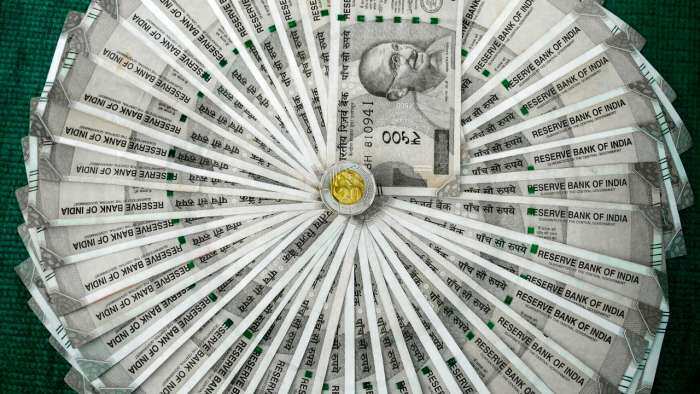India facing higher monsoon rains than forecast - IMD chief

India looks likely to receive higher monsoon rainfall than previously forecast as concern over the El Nino weather condition has eased, the chief of the India Meteorological Department (IMD) said on Tuesday, raising prospects of higher farm and economic growth.
The IMD on April 18 forecast this year`s monsoon rains at 96 percent of the 50-year average of 89 cm.
"Things have changed for the good since then," K.J. Ramesh, director general of the IMD, told Reuters in an interview.
The monsoon delivers about 70 percent of India`s annual rainfall, critical for growing crops such as rice, cane, corn, cotton and soybeans because nearly half of the country`s farmland lacks irrigation.
"We assessed 96 percent based on the climatological conditions up to March. Now, conditions are becoming favourable for an improvement over our April 18 estimate," Ramesh said.
Australia`s Bureau of Meteorology recently said there were signs of concerns easing over El Nino.
El Niño, a warming of ocean surface temperatures in the eastern and central Pacific that typically occurs every few years and was linked to crop damage, fires and flash floods, faded in 2016.
The establishment phase of the monsoon north of the equator has already started, and the Indian Ocean Dipole phenomenon - which counters the impact of an El Nino - will have an incremental positive effect on the Indian monsoon, Ramesh said.
Pre-monsoon showers have already hit certain dry areas in the southern part of the country, he said, bringing much needed relief to farmers ahead of the start of the four-month monsoon season beginning June.
India defines average, or normal, rainfall as between 96 percent and 104 percent of the 50-year average.
NEW PREDICTION MODEL
Jettisoning a statistical method introduced under British colonial rule in the 1920s, the India Meteorology Department has for the first time relied on the so-called dynamic model to improve the accuracy of one of the world`s most vital weather forecasts.
The new system, based on a U.S. model tweaked for India, requires large computing power to generate three-dimensional models to help predict how the monsoon is likely to develop.
Experts say better forecasting could help India raise its farm output by nearly 15 percent, by helping farmers tweak the best time to sow, irrigate or apply fertiliser and if rains fail, plan state-wide measures.
This would be a major boon for a country already either the world`s biggest or second-biggest producer and consumer of rice, wheat, sugar and cotton.
Higher farm output will raise the income of some 600 million people, who depend on farming for their livelihood, and boost demand for an array of goods and services.
Get Latest Business News, Stock Market Updates and Videos; Check your tax outgo through Income Tax Calculator and save money through our Personal Finance coverage. Check Business Breaking News Live on Zee Business Twitter and Facebook. Subscribe on YouTube.
RECOMMENDED STORIES

Rs 1,500 Monthly SIP for 20 Years vs Rs 15,000 Monthly SIP for 5 Years: Know which one can give you higher returns in long term

FD Rates for Rs 10 lakh investment: Compare SBI, PNB, HDFC, ICICI, and Post Office 5-year fixed deposit returns

LIC Saral Pension Plan: How much should you invest one time to get Rs 64,000 annual pension for life?

SIP Calculation at 12% Annualised Return: Rs 1,000 monthly SIP for 20 years, Rs 4,000 for 5 years or Rs 10,000 for 2 years, which do you think works best?

SBI Senior Citizen FD Rates: Know your maturity amount for investments ranging from Rs 5 lakh to Rs 15 lakh in 1 year, 3-year and 5-year, calculations inside
10:34 AM IST










 Monsoon rains 8% above long-period average, says weather office IMD
Monsoon rains 8% above long-period average, says weather office IMD The ultimate guide to choosing the right bedsheets for monsoon season
The ultimate guide to choosing the right bedsheets for monsoon season Rajasthan Rains Update: Heavy showers recorded in Tonk, Pali, Bundi, Bhilwar districts; see latest IMD data
Rajasthan Rains Update: Heavy showers recorded in Tonk, Pali, Bundi, Bhilwar districts; see latest IMD data IMD predicts active monsoon conditions in most northwestern regions over next 4-5 days
IMD predicts active monsoon conditions in most northwestern regions over next 4-5 days  Monsoon Rains Weather News: Heavy showers lash several regions in India; see latest IMD updates
Monsoon Rains Weather News: Heavy showers lash several regions in India; see latest IMD updates